Custom Neofetch(自定义neofetch)
custom own neofetch output Linux distribution ascii logo
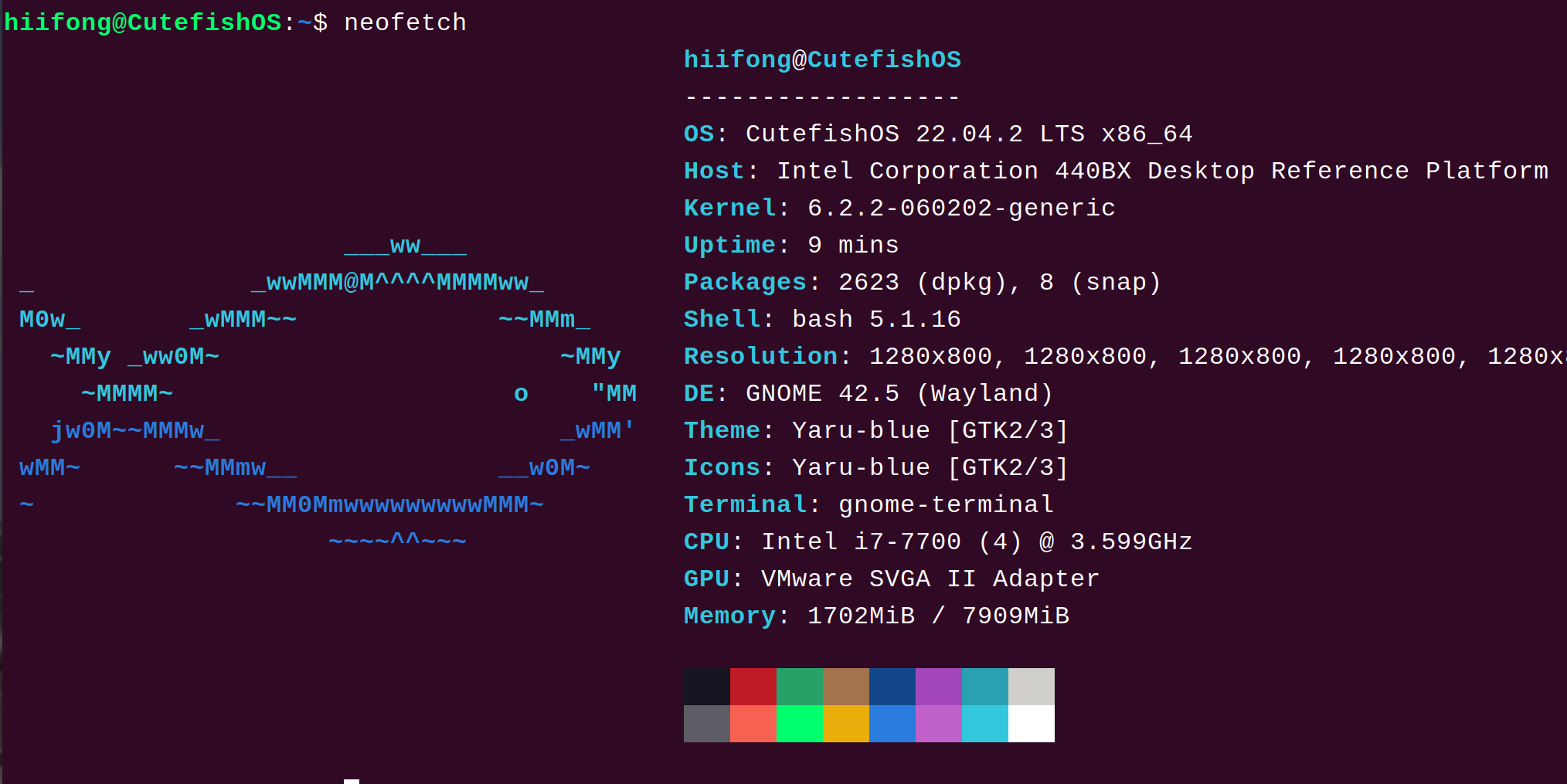
目录
警告
本文最后更新于 2023-03-09,文中内容可能已过时。
前言
之前在看一些博客发现,一些博主在分享某些程序的时候在博文里带上Linux的logo及系统的信息的截图,感觉特别炫酷。例如下面的截图:
Ubuntu:
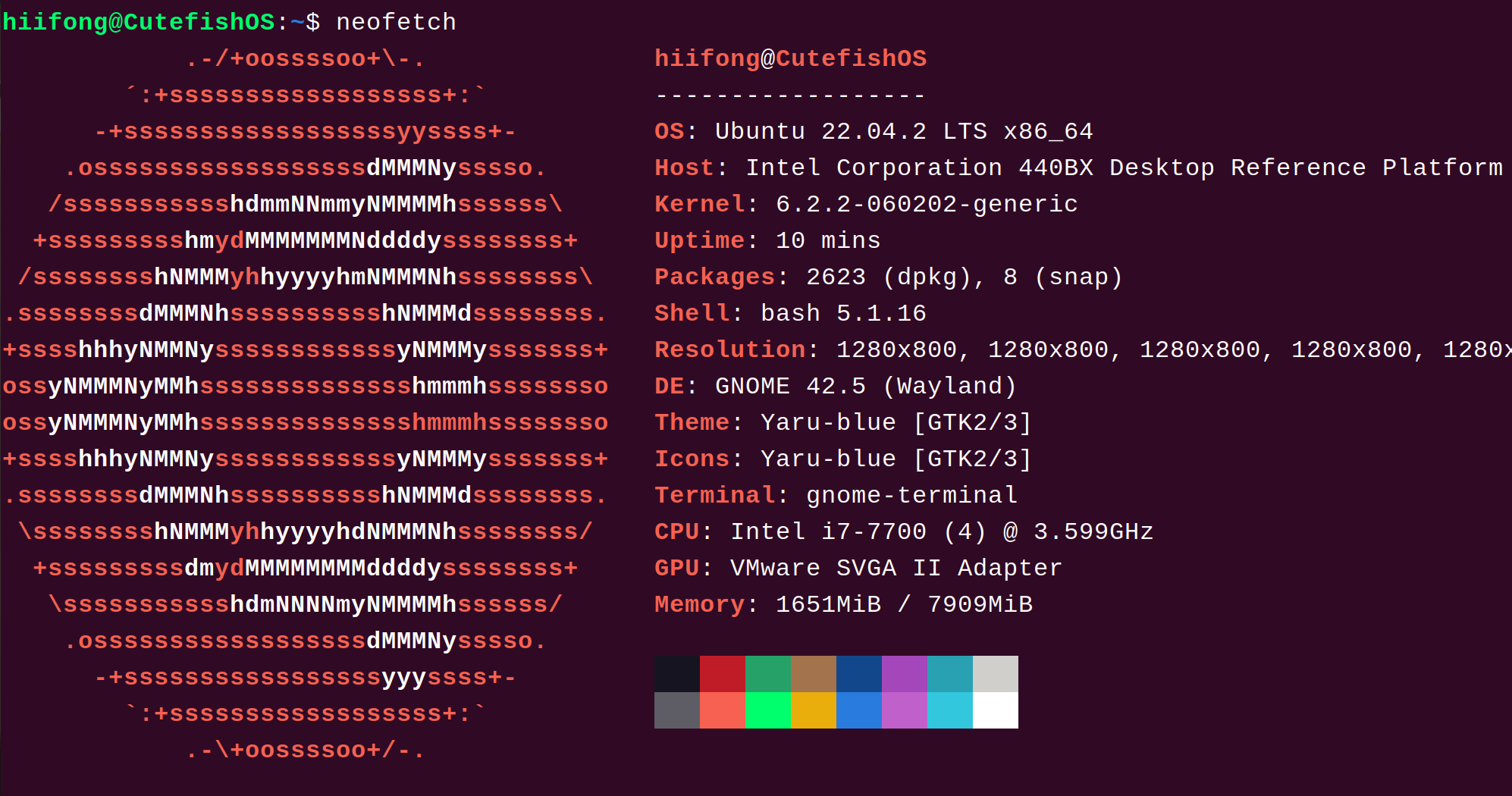
Mac OS:

Custom:
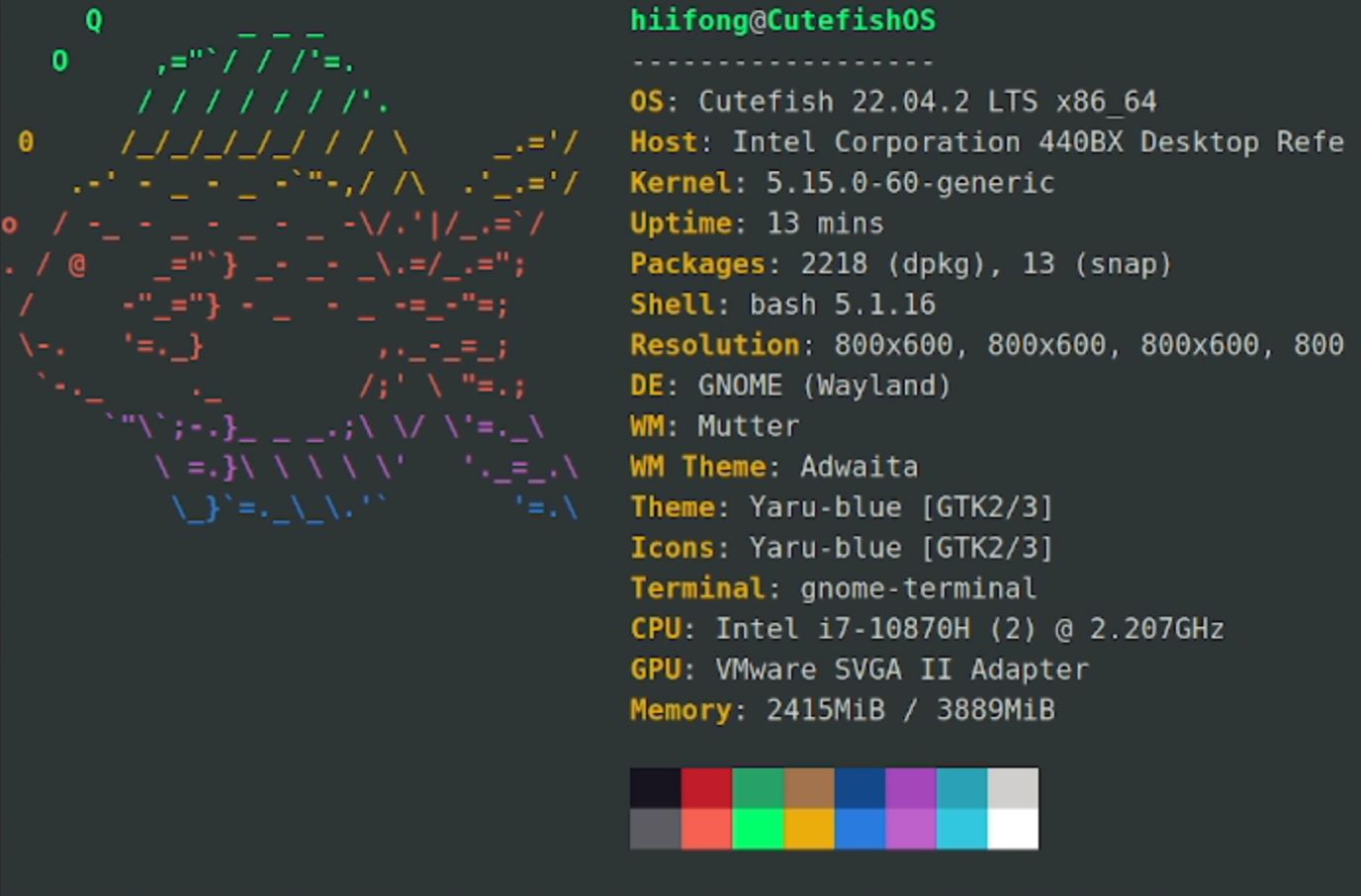
Custom:
git clone neofetch repo:
1 2git clone https://github.com/dylanaraps/neofetch.git cd neofetchadd custom Linux distro ascii logo
use edit open neofetch file,example:
vim neofetchfind out
get_distro_ascci()function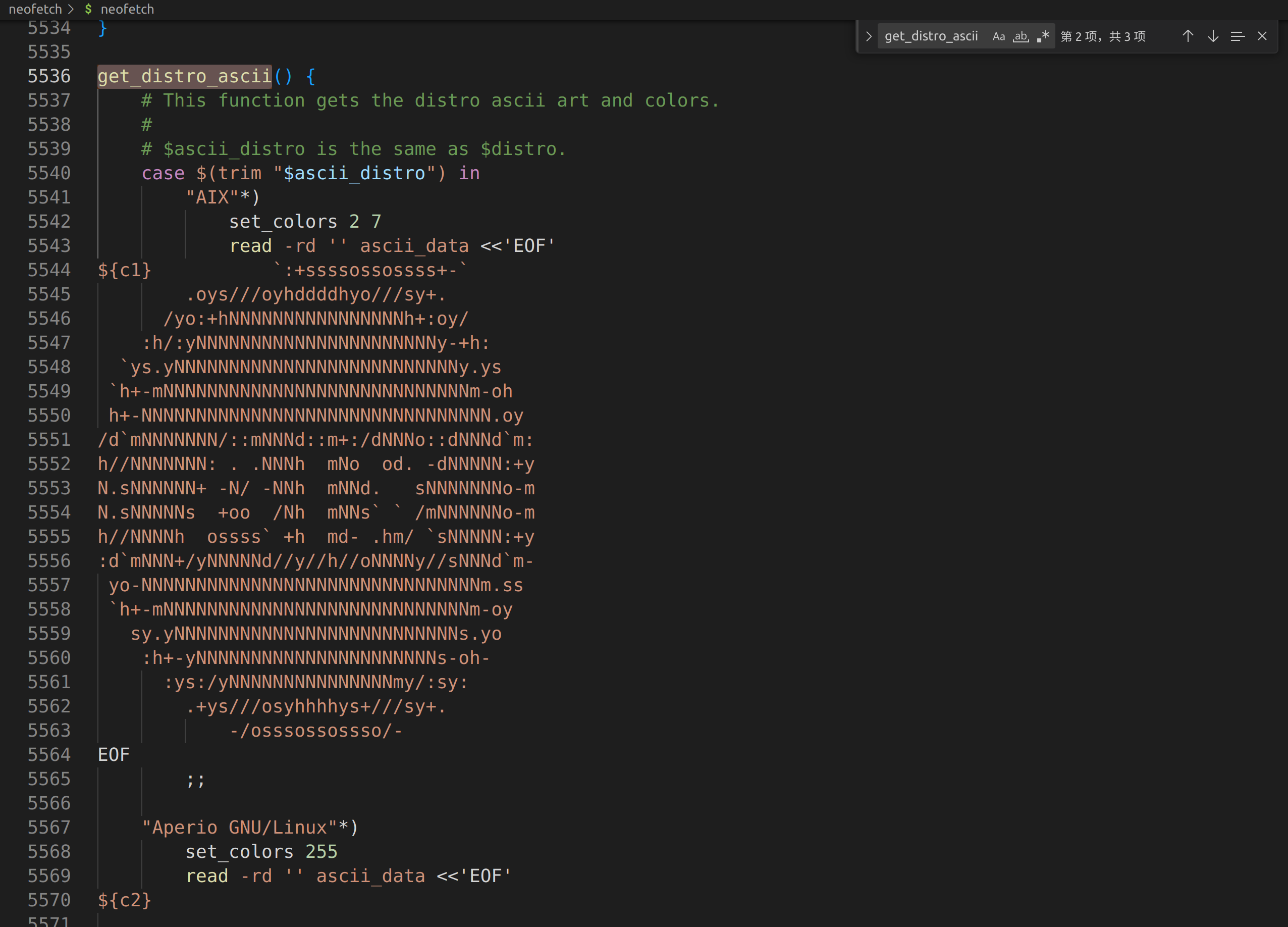
copy any template and edit it
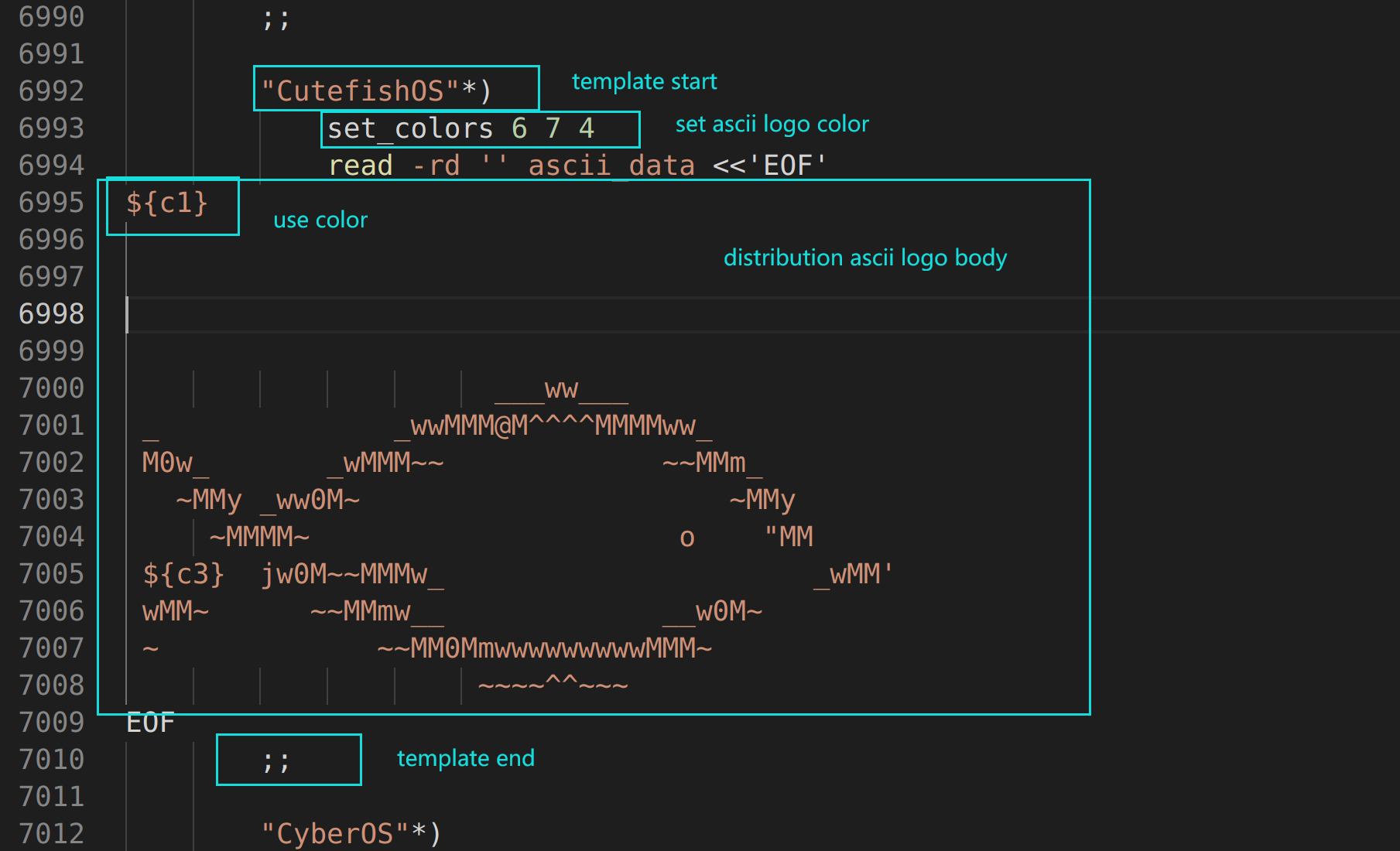
install neofetch
1make installedit os-release
1 2 3 4 5 6 7 8 9 10 11 12 13 14 15 16 17 18 19 20 21 22 23 24 25 26 27 28 29 30 31 32 33 34 35 36 37 38 39 40 41 42 43 44 45 46 47 48 49 50 51 52 53 54 55 56 57 58 59 60 61 62 63 64 65 66 67 68 69 70 71 72 73 74 75 76 77 78 79 80 81 82 83 84 85 86 87 88 89 90 91 92 93 94 95 96 97 98 99 100 101 102 103 104 105 106 107 108 109 110 111 112 113 114 115 116 117 118 119 120 121 122 123 124 125 126 127 128 129 130 131 132 133 134 135 136 137 138 139 140 141 142 143 144 145 146OS-RELEASE(5) os-release OS-RELEASE(5) NAME os-release - Operating system identification SYNOPSIS /etc/os-release /usr/lib/os-release DESCRIPTION The /etc/os-release and /usr/lib/os-release files contain operating system identification data. The basic file format of os-release is a newline-separated list of environment-like shell-compatible variable assignments. It is possible to source the configuration from shell scripts, however, beyond mere variable assignments, no shell features are supported (this means variable expansion is explicitly not supported), allowing applications to read the file without implementing a shell compatible execution engine. Variable assignment values must be enclosed in double or single quotes if they include spaces, semicolons or other special characters outside of A-Z, a-z, 0-9. Shell special characters ("$", quotes, backslash, backtick) must be escaped with backslashes, following shell style. All strings should be in UTF-8 format, and non-printable characters should not be used. It is not supported to concatenate multiple individually quoted strings. Lines beginning with "#" shall be ignored as comments. The file /etc/os-release takes precedence over /usr/lib/os-release. Applications should check for the former, and exclusively use its data if it exists, and only fall back to /usr/lib/os-release if it is missing. Applications should not read data from both files at the same time. /usr/lib/os-release is the recommended place to store OS release information as part of vendor trees. /etc/os-release should be a relative symlink to /usr/lib/os-release, to provide compatibility with applications only looking at /etc. A relative symlink instead of an absolute symlink is necessary to avoid breaking the link in a chroot or initrd environment such as dracut. os-release contains data that is defined by the operating system vendor and should generally not be changed by the administrator. As this file only encodes names and identifiers it should not be localized. The /etc/os-release and /usr/lib/os-release files might be symlinks to other files, but it is important that the file is available from earliest boot on, and hence must be located on the root file system. For a longer rationale for os-release please refer to the Announcement of /etc/os-release[1]. OPTIONS The following OS identifications parameters may be set using os-release: NAME= A string identifying the operating system, without a version component, and suitable for presentation to the user. If not set, defaults to "NAME=Linux". Example: "NAME=Fedora" or "NAME="Debian GNU/Linux"". VERSION= A string identifying the operating system version, excluding any OS name information, possibly including a release code name, and suitable for presentation to the user. This field is optional. Example: "VERSION=17" or "VERSION="17 (Beefy Miracle)"". ID= A lower-case string (no spaces or other characters outside of 0-9, a-z, ".", "_" and "-") identifying the operating system, excluding any version information and suitable for processing by scripts or usage in generated filenames. If not set, defaults to "ID=linux". Example: "ID=fedora" or "ID=debian". VERSION_ID= A lower-case string (mostly numeric, no spaces or other characters outside of 0-9, a-z, ".", "_" and "-") identifying the operating system version, excluding any OS name information or release code name, and suitable for processing by scripts or usage in generated filenames. This field is optional. Example: "VERSION_ID=17" or "VERSION_ID=11.04". PRETTY_NAME= A pretty operating system name in a format suitable for presentation to the user. May or may not contain a release code name or OS version of some kind, as suitable. If not set, defaults to "PRETTY_NAME="Linux"". Example: "PRETTY_NAME="Fedora 17 (Beefy Miracle)"". ANSI_COLOR= A suggested presentation color when showing the OS name on the console. This should be specified as string suitable for inclusion in the ESC [ m ANSI/ECMA-48 escape code for setting graphical rendition. This field is optional. Example: "ANSI_COLOR="0;31"" for red, or "ANSI_COLOR="1;34"" for light blue. CPE_NAME= A CPE name for the operating system, following the Common Platform Enumeration Specification[2] as proposed by the MITRE Corporation. This field is optional. Example: "CPE_NAME="cpe:/o:fedoraproject:fedora:17"" HOME_URL=, SUPPORT_URL=, BUG_REPORT_URL=, PRIVACY_POLICY_URL= Links to resources on the Internet related the operating system. HOME_URL= should refer to the homepage of the operating system, or alternatively some homepage of the specific version of the operating system. SUPPORT_URL= should refer to the main support page for the operating system, if there is any. This is primarily intended for operating systems which vendors provide support for. BUG_REPORT_URL= should refer to the main bug reporting page for the operating system, if there is any. This is primarily intended for operating systems that rely on community QA. PRIVACY_POLICY_URL= should refer to the main privacy policy page for the operation system, if there is any. These settings are optional, and providing only some of these settings is common. These URLs are intended to be exposed in "About this system" UIs behind links with captions such as "About this Operating System", "Obtain Support", "Report a Bug", or "Privacy Policy". The values should be in RFC3986 format[3], and should be "http:" or "https:" URLs, and possibly "mailto:" or "tel:". Only one URL shall be listed in each setting. If multiple resources need to be referenced, it is recommended to provide an online landing page linking all available resources. Examples: "HOME_URL="https://fedoraproject.org/"" and "BUG_REPORT_URL="https://bugzilla.redhat.com/"" BUILD_ID= A string uniquely identifying the system image used as the origin for a distribution (it is not updated with system updates). The field can be identical between different VERSION_IDs as BUILD_ID is an only a unique identifier to a specific version. Distributions that release each update as a new version would only need to use VERSION_ID as each build is already distinct based on the VERSION_ID. This field is optional. Example: "BUILD_ID="2013-03-20.3"" or "BUILD_ID=201303203". VARIANT= A string identifying a specific variant or edition of the operating system suitable for presentation to the user. This field may be used to inform the user that the configuration of this system is subject to a specific divergent set of rules or default configuration settings. This field is optional and may not be implemented on all systems. Examples: "VARIANT="Server Edition"", "VARIANT="Smart Refrigerator Edition"" Note: this field is for display purposes only. The VARIANT_ID field should be used for making programmatic decisions. VARIANT_ID= A lower-case string (no spaces or other characters outside of 0-9, a-z, ".", "_" and "-"), identifying a specific variant or edition of the operating system. This may be interpreted by other packages in order to prefix new fields with an OS specific name in order to avoid name clashes. Applications reading this file must ignore unknown fields. Example: "DEBIAN_BTS="debbugs://bugs.debian.org/"" EXAMPLE NAME=Fedora VERSION="17 (Beefy Miracle)" ID=fedora VERSION_ID=17 PRETTY_NAME="Fedora 17 (Beefy Miracle)" ANSI_COLOR="0;34" CPE_NAME="cpe:/o:fedoraproject:fedora:17" HOME_URL="https://fedoraproject.org/" BUG_REPORT_URL="https://bugzilla.redhat.com/" SEE ALSO systemd(1), lsb_release(1), hostname(5), machine-id(5), machine-info(5) NOTES 1. Announcement of /etc/os-release http://0pointer.de/blog/projects/os-release 2. Common Platform Enumeration Specification https://cpe.mitre.org/specification/ 3. RFC3986 format https://tools.ietf.org/html/rfc3986 systemd 219 OS-RELEASE(5)edit
PRETTY_NAMEas root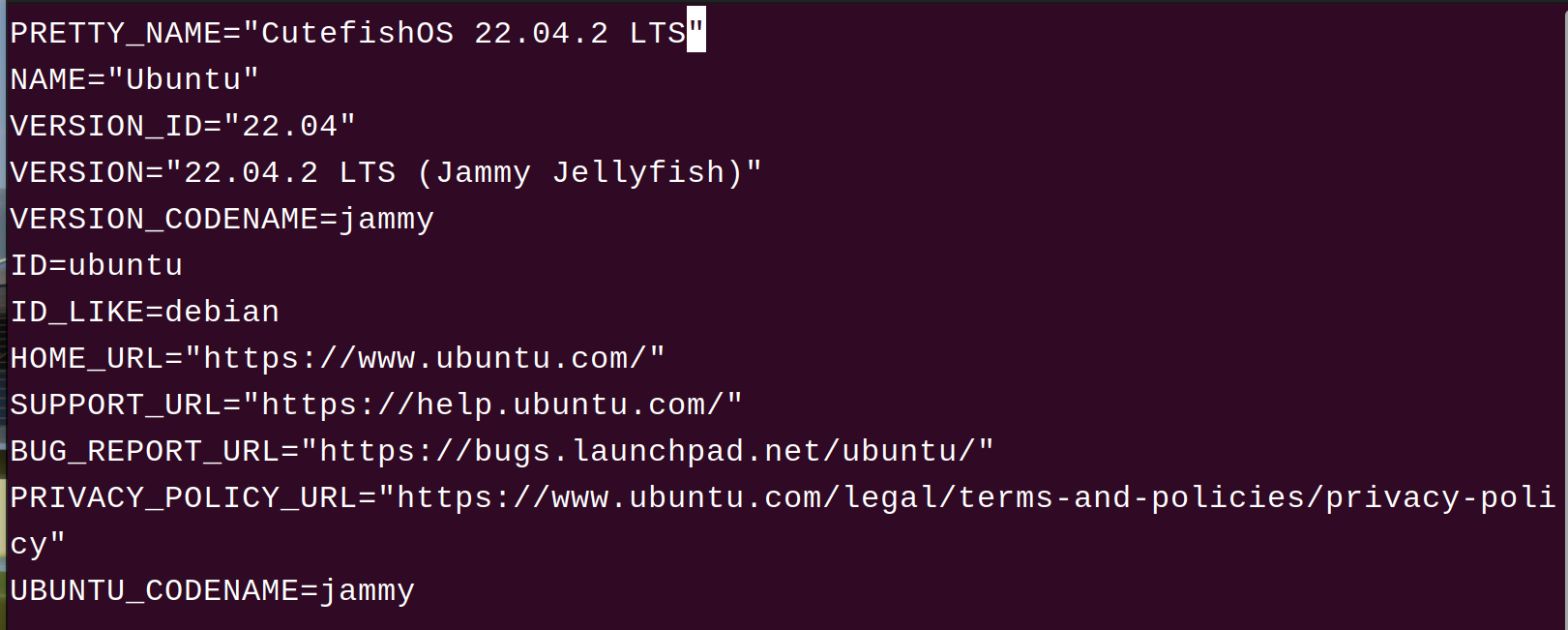
test neofetch
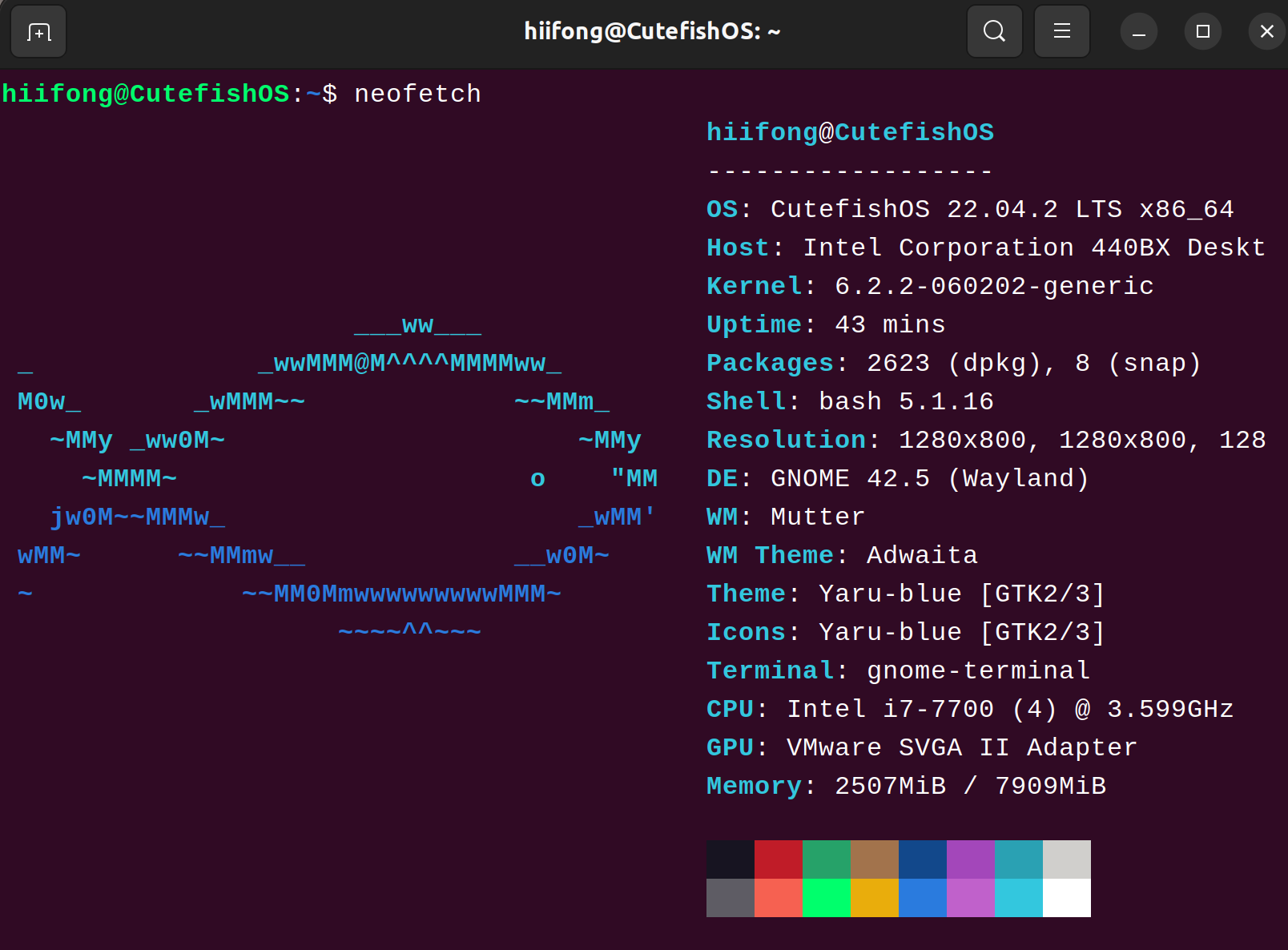
the ascii logo merge from leap0x7b:cutefishos
this is a simple guide, read more
Buy Me a Coffee ~~
 支付宝
支付宝 微信
微信